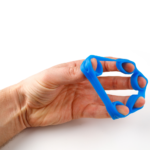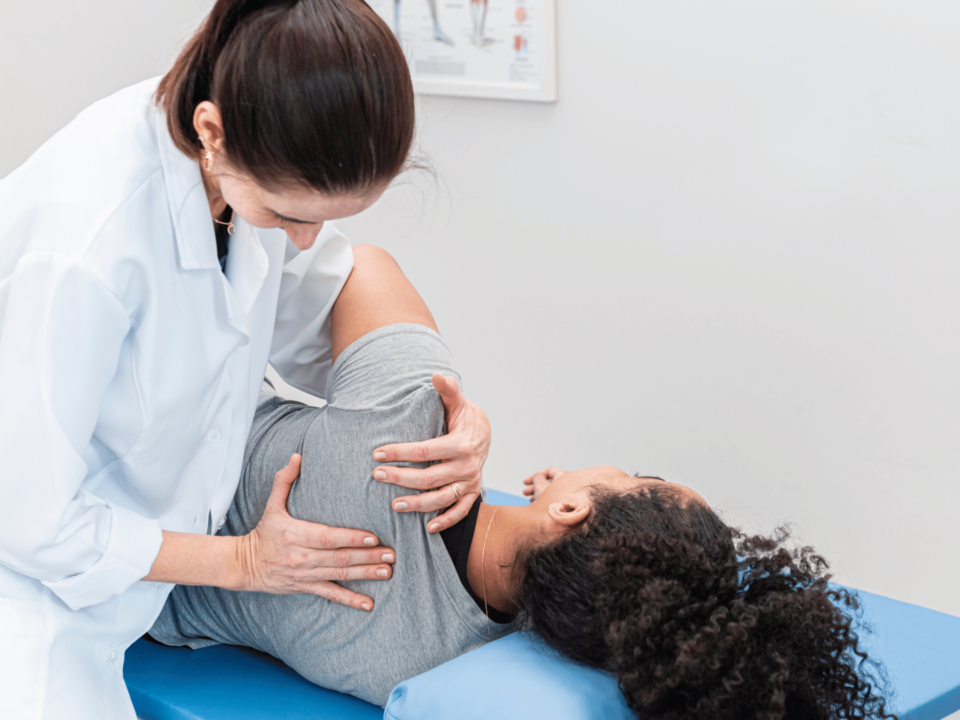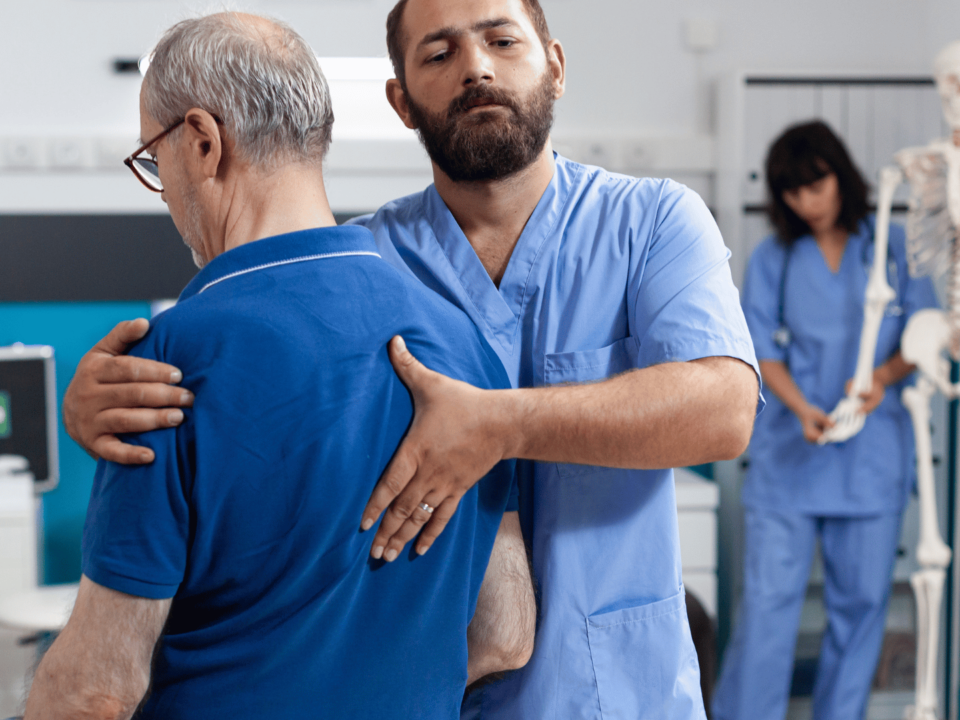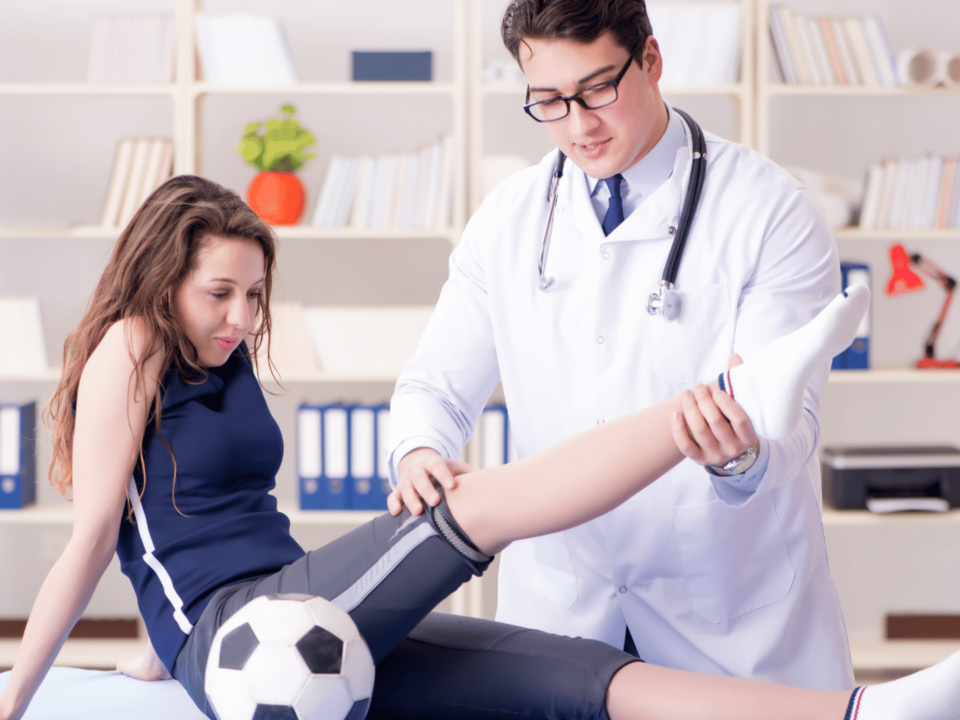
Understanding and Managing Boutonnière Deformity: A Comprehensive Orthopedic Guide
February 12, 2024
Extensor Tendonitis: Navigating Through Recovery and Maintaining Foot Health
April 2, 2024UCL Thumb Injuries: Navigating Diagnosis, Treatment, and Recovery in Orthopedics
UCL thumb injuries are a common orthopedic condition that can cause significant pain and functional limitations. Whether you’re an athlete or simply an active individual, understanding the causes, symptoms, diagnosis, treatment options, and recovery process is crucial for navigating this type of injury. In this comprehensive guide, we will explore all aspects of UCL thumb injuries, providing you with the knowledge and tools you need to navigate your diagnosis, treatment, and recovery journey.
Understanding UCL Thumb Injuries: Causes and Risk Factors
UCL thumb injuries, also known as ulnar collateral ligament injuries, can be quite debilitating and often occur due to a sudden forceful movement that stresses or tears the ulnar collateral ligament. This ligament is responsible for connecting the thumb to the hand, providing stability and allowing for a wide range of movements.
One of the most common causes of UCL thumb injuries is falls. Whether it’s a simple slip or a more severe accident, the impact of the fall can put immense pressure on the thumb, leading to ligament damage. Sports injuries are another frequent cause of UCL thumb injuries, especially in sports that involve gripping or catching objects, such as basketball, volleyball, or even rock climbing. In these activities, the thumb is often subjected to hyperextension or forceful bending, making it vulnerable to injury.
However, it’s not just falls and sports that can lead to UCL thumb injuries. Accidents that involve sudden twisting or wrenching of the thumb, such as getting it caught in a door or during a car collision, can also result in ligament tears. These unexpected events can cause immense pain and limit the thumb’s functionality.
When it comes to risk factors, there are several factors that can increase the likelihood of experiencing a UCL thumb injury. Individuals who participate in sports that involve repetitive thumb movements, such as tennis or golf, are more prone to developing these injuries. The constant strain on the thumb ligament can gradually weaken it over time, making it more susceptible to tears.
Furthermore, individuals who extensively use their thumbs for activities that require a strong grip, such as construction workers or musicians, are also at a higher risk of UCL thumb injuries. The repetitive and forceful nature of these activities can gradually wear down the ligament, making it more prone to injury.
It’s important to note that pre-existing hand conditions or previous injuries to the thumb can also make individuals more susceptible to UCL thumb injuries. Conditions such as arthritis or ligament laxity can weaken the ligament, making it more prone to tearing. Additionally, individuals who have previously experienced a UCL thumb injury are more likely to re-injure the ligament due to the weakened state of the tissue.
Understanding the causes and risk factors associated with UCL thumb injuries can help individuals take preventive measures and seek appropriate treatment if necessary. At Center For Specialty Care, we can help prevent potential dangers and take steps to protect the thumb so individuals can reduce the risk of experiencing this painful and limiting condition.
Recognizing the Symptoms of UCL Thumb Injuries: A Comprehensive Guide
The symptoms of a UCL thumb injury may vary depending on the severity of the damage. Common symptoms include pain, swelling, tenderness, and limited range of motion in the affected thumb. You may also experience instability or a popping sensation when attempting to grasp objects or perform everyday tasks.
It’s important to seek medical attention if you suspect a UCL thumb injury, as proper diagnosis and early intervention can significantly improve outcomes and prevent potential complications.
When it comes to pain, individuals with a UCL thumb injury often describe it as sharp and localized to the base of the thumb. The pain can worsen with activities that require gripping or pinching, such as holding a pen or opening a jar. In some cases, the pain may radiate up the forearm or even into the hand.
Swelling is another common symptom of a UCL thumb injury. The injured area may appear red and feel warm to the touch. The swelling can make it difficult to fully bend or straighten the thumb, leading to a limited range of motion. This can be particularly frustrating when trying to perform simple tasks like buttoning a shirt or tying shoelaces.
Diagnostic Tools and Techniques for UCL Thumb Injuries: What Orthopedic Specialists Use
Orthopedic specialists employ various diagnostic tools and techniques to accurately identify UCL thumb injuries. These may include:
- Physical examination: An orthopedic specialist will assess the thumb for tenderness, swelling, instability, and range of motion limitations.
- Imaging tests: X-rays or, in some cases, ultrasound and MRI scans can provide detailed images of the thumb, helping to confirm the diagnosis and assess the extent of the injury.
While physical examination and imaging tests are the primary methods used by orthopedic specialists to diagnose UCL thumb injuries, there are additional tools and techniques that can provide valuable insights into the condition. One such technique is the use of stress tests.
Stress tests involve applying specific forces to the thumb joint to assess its stability and the integrity of the UCL. These tests can help determine the severity of the injury and guide treatment decisions. One commonly used stress test is the valgus stress test, where the thumb is bent outward while the orthopedic specialist applies pressure to the inside of the joint. This test evaluates the UCL’s ability to withstand stress and identifies any instability or laxity.
In addition to stress tests, orthopedic specialists may also utilize arthroscopy to diagnose UCL thumb injuries. Arthroscopy is a minimally invasive procedure that involves inserting a small camera into the joint through a small incision. This allows the specialist to visualize the structures within the thumb joint, including the UCL, and assess any damage or abnormalities. Arthroscopy provides a detailed and real-time view of the joint, aiding in accurate diagnosis and treatment planning.
Exploring Non-Surgical Treatment Options for UCL Thumb Injuries
Non-surgical treatment options are often the first line of management for UCL thumb injuries, especially in cases of partial tears or less severe injuries. These treatment options may include:
- Immobilization: Wearing a thumb splint or cast helps immobilize the thumb, allowing the UCL to heal.
- Ice therapy: Applying ice packs to the injured thumb can help reduce pain and swelling.
- Nonsteroidal anti-inflammatory drugs (NSAIDs): Medications such as ibuprofen can help manage pain and inflammation.
- Hand therapy: Engaging in specific exercises and activities under the guidance of a hand therapist can promote healing, improve strength, and restore function.
Surgical Interventions for UCL Thumb Injuries: Procedures and Considerations
In cases where non-surgical treatments do not provide sufficient relief or the injury is severe, surgical intervention may be necessary. Surgical options for UCL thumb injuries include:
- UCL reconstruction: This surgical procedure involves using a tendon graft to replace the damaged UCL, restoring stability and function to the thumb.
- Ligament repair: In some cases, direct repair of the torn or detached UCL may be possible, especially for acute injuries.
Prior to recommending surgery, orthopedic specialists will consider various factors such as the extent of the injury, functional goals, and the individual’s overall health. It’s important to have a thorough discussion with your healthcare provider to determine the best course of action for your specific situation.
The Role of Physical Therapy in Rehabilitating UCL Thumb Injuries
Physical therapy plays a crucial role in the recovery process following UCL thumb injuries. A skilled physical therapist will develop a customized rehabilitation plan that focuses on restoring strength, range of motion, and functional abilities. The goals of physical therapy may include:
- Pain management: Physical therapists can utilize various techniques such as manual therapy, therapeutic exercises, and modalities to alleviate pain and promote healing.
- Improving mobility and flexibility: Targeted exercises and stretching help restore range of motion and flexibility in the thumb joint.
- Strengthening: Specific exercises and progressive resistance training aim to rebuild strength in the thumb and surrounding muscles to ensure stability and functionality.
Tips for Managing Pain and Swelling during Recovery from UCL Thumb Injuries
Pain and swelling are common during the recovery period after a UCL thumb injury. Here are some helpful tips to manage these symptoms:
- Follow your healthcare provider’s recommended pain management strategies, such as taking prescribed medications or using ice therapy.
- Elevate your hand to reduce swelling. Keeping your hand above heart level can help minimize fluid accumulation in the injured thumb.
- Engage in gentle range of motion exercises recommended by your physical therapist to prevent stiffness and promote blood flow.
Preventing UCL Thumb Injuries: Strategies for Athletes and Active Individuals
While it may not be possible to completely eliminate the risk of UCL thumb injuries, there are steps you can take to reduce the likelihood of experiencing one. Consider the following injury prevention strategies:
- Ensure proper technique and form when participating in sports or engaging in activities that place stress on the thumb.
- Wear appropriate protective gear, such as thumb splints or braces, when participating in high-risk activities.
- Gradually increase the intensity and duration of activities to allow your hand and thumb to adapt to physical demands.
Returning to Sports and Activities after UCL Thumb Injuries: Guidelines and Expectations
Returning to sports and activities after a UCL thumb injury requires careful planning and consideration. Your healthcare provider and physical therapist will assess your progress and provide guidelines based on your specific injury and recovery trajectory. It’s essential to follow these guidelines to avoid re-injury and ensure a successful return to your desired level of activity.
Long-term Outlook and Prognosis for UCL Thumb Injuries: What to Expect
The long-term outlook for UCL thumb injuries is generally positive, especially with appropriate diagnosis, timely intervention, and appropriate rehabilitation. However, recovery timelines can vary depending on the severity of the injury and individual factors. It’s important to have realistic expectations and work closely with your healthcare team to achieve the best possible outcome.
Remember, navigating a UCL thumb injury requires patience, commitment to rehabilitation, and collaboration with us at Center For Specialty Care. By understanding the causes, recognizing the symptoms, and pursuing appropriate treatment options, you can effectively navigate your diagnosis, treatment, and recovery journey, ultimately returning to the activities you love with confidence and strength.




